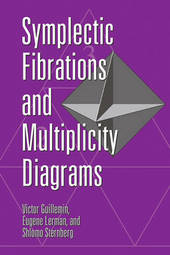
|
Symplectic Fibrations and Multiplicity Diagrams
Paperback / softback
Main Details
| Title |
Symplectic Fibrations and Multiplicity Diagrams
|
| Authors and Contributors |
By (author) Victor Guillemin
|
|
By (author) Eugene Lerman
|
|
By (author) Shlomo Sternberg
|
| Physical Properties |
| Format:Paperback / softback | | Pages:240 | | Dimensions(mm): Height 229,Width 152 |
|
| Category/Genre | Geometry |
|---|
| ISBN/Barcode |
9780521111867
|
| Classifications | Dewey:516.36 |
|---|
| Audience | | Professional & Vocational | |
|---|
| Illustrations |
35 Line drawings, unspecified
|
|
Publishing Details |
| Publisher |
Cambridge University Press
|
| Imprint |
Cambridge University Press
|
| Publication Date |
11 June 2009 |
| Publication Country |
United Kingdom
|
Description
Multiplicity diagrams can be viewed as schemes for describing the phenomenon of 'symmetry breaking' in quantum physics. The subject of this book is the multiplicity diagrams associated with the classical groups U(n), O(n), etc. It presents such topics as asymptotic distributions of multiplicities, hierarchical patterns in multiplicity diagrams, lacanae, and the multiplicity diagrams of the rank 2 and rank 3 groups. The authors take a novel approach, using the techniques of symplectic geometry. The book develops in detail some themes which were touched on in the highly successful Symplectic Techniques in Physics by V. Guillemin and S. Sternberg, including the geometry of the moment map, the Duistermaat-Heckman theorem, the interplay between coadjoint orbits and representation theory, and quantization. Students and researchers in geometry and mathematical physics will find this book fascinating.
Reviews'The authors take a novel approach, using the techniques of symplectic geometry. They develop in detail some themes that were touched on in Symplectic Techniques in Physics (Guillemin and Sternberg, Cambridge University Press 1994).' L'Enseignement Mathematique 'The book contains a wealth of interesting material ... The book is a very interesting survey of a rapidly developing field of research and it is certainly worth of the effort needed to read and to understand it.' European Mathematical Society
|